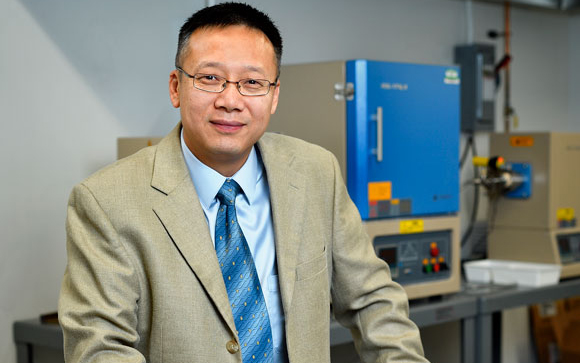
University of North Texas Department of Materials Science and Engineering professor Jincheng Du is working to develop new glass materials to store nuclear waste and, after experimenting with advanced modeling and characterizations, found that a gel layer that forms on the glass surface, has unique properties. This gel layer holds the key to long-term durability of nuclear waste storage.
“The problem is corrosion of the material used to hold waste. Over time, environmental conditions lead to corrosion and the release of radioactive elements into the environment. We want to prevent that,” said Du. “Borosilicate glasses have high durability and are the chosen form to immobilize high-level nuclear waste. The key is to maintain durability in the very long term: thousands to hundreds of thousands of years.
“By combining a wide range of analytical techniques and advanced computer simulations, we have made great progress in understanding the important characteristics of the gel layer formed on the glass. The gel layer prevents water transport and makes the glass chemically durable in the long term.”
Through a process called vitrification, nuclear waste is melted with glass-forming additives into a glass that fully contains the waste. This molten glass is then poured into a stainless steel container and stored underground at selected sites with geological stability. Because the waste emits different levels of radiation and environmental conditions are different from site to site, storage materials will break down at different rates. As a result, it is critical to obtain a fundamental understanding of the long-term corrosion mechanism of these glass materials.
“In order to build a usable predictive model of the corrosion and find ways to stop it, the properties of the gel layer must be fully understood,” he said. “When that is done, we will have a better idea of how long this method of storage will work in different environments with different levels of radiation.”
In a paper published June 4, 2018 in Nature Communications titled Dynamics of self reorganization explains passivation of silicate glasses, Du and co-authors explain how the glass gel layer is formed and its unique anti-corrosion properties. This work is in collaboration with French Alternative and Atomic Energy Commission, the Pacific Northwest National Laboratory and funded by the U.S. Department of Energy Frontier Research Center - Center for Performance and Design of Nuclear Waste Forms and Containers.